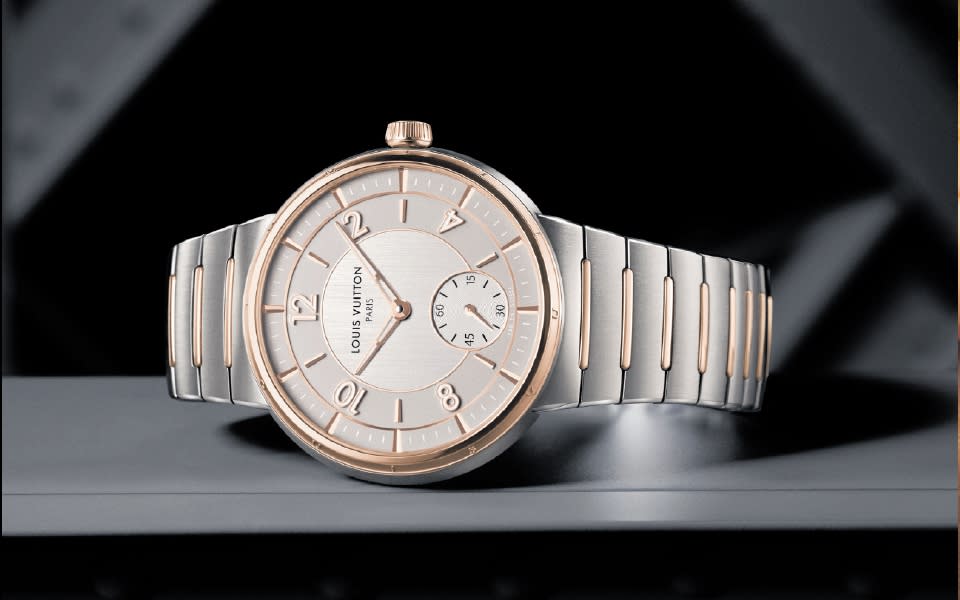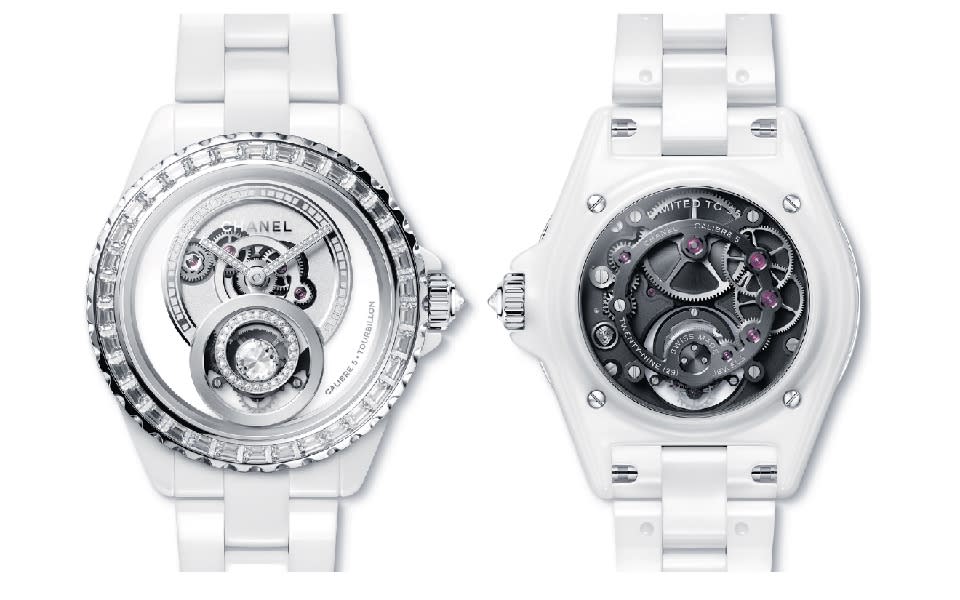How fashion brands like Dior, Chanel and Louis Vuitton embraced Swiss watchmaking

It’s the watch that paved the way for fashion-brand respectability in the stuffy world of watchmaking. It’s spawned countless copycats (we’re looking at you, Michael Kors) and pioneered new ceramic technologies in the process. It is the genuinely timeless ‘J12’ by Chanel.
The enduring success of J12 probably took Chanel itself by surprise – especially since watch aficionados defied received Swiss wisdom and conceded in 2000 that here, finally, was a fashion watch with genuine horological integrity. Thus, paving the way for Louis Vuitton and Dior and their own ‘proper’ watch collections, then something more unfathomable: the stuffy establishment flexing to collaborate even relying on Chanel’s expertise and investment, viz. Tudor’s joint ‘Kennissi’ factory in Le Locle, now supplying Breitling, of all marques, with its chronometer-grade automatic mechanics.
The J12’s outer case was a highly innovative use of ceramic (only Rado had mastered this material beforehand in the Eighties) which echoed Chanel’s cult handbag leitmotif of quilted, glossy monochrome. The technology required for forging zirconium oxide components to nanometre-level tolerances at 900ºC demanded a purpose-built facility in modern mechanical watchmaking’s cradle, La Chaux-de-Fonds – again in cahoots with another Swiss/French firmament, Bell & Ross.
Chanel is known for its quiet, canny investments in seemingly esoteric enterprises, which ultimately contribute to ever-evolving autonomy, plus the preservation of endangered skills. The Chaux-de-Fonds ceramic facility was one (née G. & F. Châtelain); a former CNC-machining technician-turned-indie watchmaker, Romain Gauthier was another. But what the J12 does best is what it got right from the start; like the best-fitting little black dress, it never need change. And the same goes for a watch called Tambour: like the J12, just over 20 years young, and just like the J12, a move no one expected from Louis Vuitton.
Mothership LVMH already had its watch bases well covered, from the automotive sportiness of TAG Heuer to elder-statesman Zenith and the bejewelled confections of Chaumet. What could a luggage brand bring to the traytable apart perhaps from a new take on a time-zoner?
With its titular drum-shaped case – mounted on LV-monogrammed leather, canvas and yellow-waxed thread, just like all those iconic trunks – this was a safely solid opening salvo. A genuinely original design inspired by Japanese kodo drummers and their taiko drums, revamped last year with bang-on-trend ‘integrated’ sports bracelet and textured, sector dial.

Tambour’s relaunch was at Paris’s Musée d’Orsay last July. A fitting venue, since the museum was once a train terminus and time and travel have always been at the heart of Louis Vuitton’s adventures in accessories. For 2009’s Spin Time watch, this was rendered literally in the form of split-flap departure boards, whose clacking was once the soundtrack of every station concourse and airport: a new form of jumping hour dreamt-up by Michael Navas, designer and founder of La Fabrique du Temps – a high-end horological skunkworks near Geneva that Louis Vuitton would go on to acquire in 2011.
Navas took the usual single hour module and replaced it with twelve spinning cubes. Every 60 minutes, the hour cube with its numeral visible would spin back to neutral, while the next cube in the sequence would turn to reveal its number. It was an industry first and a sign that Louis Vuitton didn’t want to be just another fashion house with a watch brand; it wanted to be taken seriously as a watchmaker.
Something that fellow LVMH-er Dior is doubling-down on too, this year. Like all the above, the pioneer of the ‘New Look’ in 1947 is Parisienne through and through, and never fails to ensure the capital city of fashion’s chic yet whimsical aesthetic is written through Dior’s every horological creation like an exquisite stick of Brighton rock.
Twenty years after its first launch, the Chiffre Rouge collection is enjoying a renaissance, reinvented through eight new models that feature some of the house’s most iconic codes, and all of Hedi Slimane’s deconstructed men’s tailoring codes, which came to bear during his revolutionary tenure as creative head of ‘Dior Homme’.
Matte-black restraint, an architectural asymmetry, red-accent crown and matching hands (plus Monsieur Dior’s favourite number, eight – the only numeral in the date display in scarlet), all to the background of ‘cannage’ lines, scored into the dial. Slimane’s loosened shoestring necktie in watch form.
The Swiss can make this sort of thing very well indeed; in the case of the Chiffre Rouge chronograph (main picture), powered precisely by stablemate Zenith’s pedigree ‘El Primero’ movement, no less. But it takes the world of fashion to dream of it first.

 Yahoo Finance
Yahoo Finance 